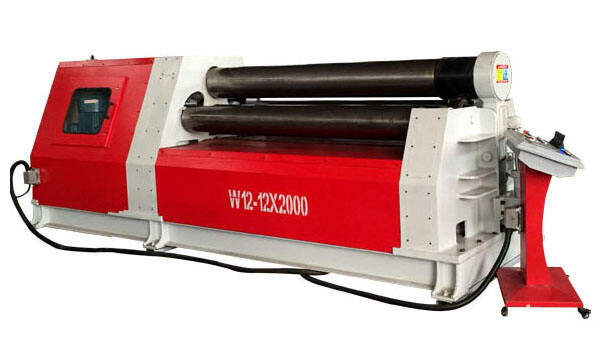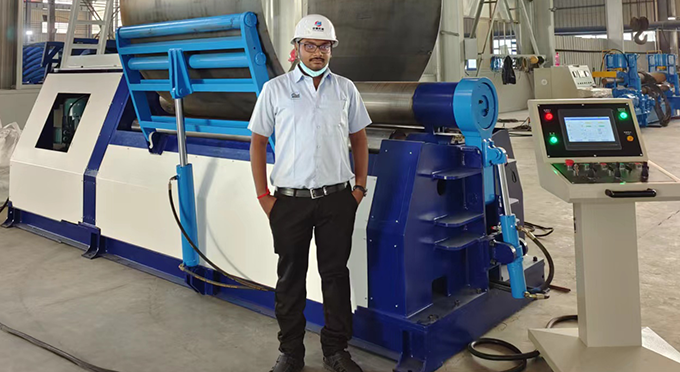A brief, informative guide to understanding the evolution of laser cutting technologies.
From CO2 to Fiber: The Shift in Laser Cutting Systems
CO2 laser cutting technology has been a longstanding staple in precision engineering, known for its ability to cut through a variety of materials like metals, plastics, and wood. It operates by using carbon dioxide gas that amplifies light to generate a powerful laser beam. Despite its widespread utilization, CO2 laser systems were often criticized for their higher energy consumption and maintenance demands. As technology advanced, fiber laser cutting machines emerged as a more efficient alternative. Fiber lasers employ a solid medium to generate the laser, resulting in faster cutting speeds, enhanced precision, and reduced operational costs.
The industry has witnessed a significant shift towards fiber laser technology due to its overall efficiency and cost-effectiveness. According to market reports, fiber laser adoption rates have surged, driven by advantages such as lower maintenance requirements and superior cutting speeds on metals [source needed]. For instance, studies indicate that fiber lasers can achieve cutting speeds up to three times faster than CO2 lasers when processing thin materials, making them a preferred option in various industrial applications. This substantial improvement in operational efficiency showcases the transformative impact of fiber lasers in precision engineering.
How Hydraulic Press Brakes Complement Laser Operations
Hydraulic press brake machines play a crucial role in the metal fabrication process, particularly in operations requiring precision bending of metallic sheets. Their primary function is to apply a controlled amount of force to shape metal into desired angles and configurations. In modern manufacturing, the synergy between laser cutting and hydraulic press brakes is redefining workflow efficiencies. When these two technologies are integrated, manufacturers can achieve streamlined operations by directly transitioning from cutting to bending processes without unnecessary handling or intermediate steps.
Case studies in the industry underscore the enhanced productivity gained through this combination. One notable example is a manufacturing plant that reported a 30% increase in efficiency by utilizing both technologies concurrently. By strategically optimizing space and equipment in the production line, businesses can also save on floor space and reduce the need for additional human resources, thereby achieving significant cost reduction. Hydraulic press brakes, with their precision and adaptability, thus serve as an invaluable complement to laser cutting operations.
Three Roll Plate Rolling Machines in Modern Fabrication
Three roll plate rolling machines are integral to the metal shaping process, allowing for the precise bending and shaping of metal sheets into curved or cylindrical forms. These machines use three adjustable rollers to shape the metal as it passes through. With the advancement of laser cutting techniques, setup times for rolling processes have drastically improved. Laser machines precisely cut and prepare metal sheets to exact specifications, ensuring seamless integration with rolling operations, resulting in minimal setup adjustments.
The integration of laser cutting and plate rolling technologies provides significant benefits for bespoke manufacturing demands. By combining the precision of lasers with the shaping capabilities of rolling machines, manufacturers can produce custom components more efficiently. Evidence from the industry indicates that this integration can lead to up to a 20% reduction in material waste, as cuts are optimized for precise rolling. The combination of these technologies supports increased productivity and aligns with the push towards more sustainable manufacturing practices.
Unmatched Precision in Intricate Pattern Cutting
Laser cutting machines are renowned for their unparalleled precision in cutting intricate patterns with micrometer-level accuracy. This precision is vital across various industries, including aerospace and automotive, where exact specifications are non-negotiable. Studies have shown that laser cutting machines produce significantly lower error rates compared to traditional methods, offering superior outcomes (Laser Cutting Machines Market Analysis). As technology advances, experts anticipate further innovations in precision-engineered applications using laser technology, enhancing its role in high-stakes industries.
Material Versatility: Metals, Plastics, and Beyond
Laser cutting machines excel in handling a diverse range of materials such as metals (steel, aluminum), plastics (polycarbonate, acrylic), and emerging composites. The properties of these materials, such as thickness and density, directly influence cutting speed and quality. Recent technical data highlight how advanced composites and bio-materials are increasingly being processed with laser technology, allowing for innovative product designs. In several case studies, this material versatility has significantly improved design flexibility and enhanced manufacturing efficiency, adapting to the evolving needs of modern production lines.
Speed vs. Accuracy: Balancing Production Demands
The challenge in laser operations often lies in balancing speed and accuracy. Faster cutting speeds can sometimes compromise precision, yet advancements in laser technology offer strategies to mitigate this trade-off. Optimizing production environments with carefully adjusted workflows can help maintain high accuracy without sacrificing speed. Industry benchmarks are evolving, showcasing optimal speed-accuracy ratios tailored for different materials. Experts predict future developments in laser technology that will further refine this balance, meeting the demanding production requirements across various sectors.
Fiber vs. CO2 Laser Cutting Systems Compared
Operational Differences in Energy Consumption
When comparing fiber and CO2 laser cutting systems, energy consumption is a crucial factor. Fiber lasers generally demand less energy compared to CO2 lasers. This results in higher operational efficiency and significant cost savings. Studies indicate that fiber lasers can consume around 50% less energy than CO2 lasers under comparable conditions. This reduced energy requirement also means lower emissions, contributing positively to environmental sustainability. As laser technologies advance, trends suggest a continuous focus on minimizing energy use, which will potentially enhance the appeal of fiber laser cutting systems over traditional CO2 systems.
Material Compatibility Analysis by Laser Type
Different laser technologies cater to specific material types, affecting performance in various applications. Fiber lasers excel in cutting metals like steel, aluminum, and copper, offering superior speed and quality. Conversely, CO2 lasers are adept at cutting non-metallic materials such as plastics, wood, and glass. Experts recommend choosing a laser system based on the predominant materials in a manufacturer's portfolio. Fiber lasers are less effective with thicker materials, specifically in industrial applications where CO2 lasers may provide better overall cutting efficacy. Understanding these strengths and limitations assists manufacturers in selecting the optimal laser cutting solution.
Long-Term Cost Implications for Manufacturers
Manufacturers face different cost considerations when investing in CO2 versus fiber laser cutting systems. Initially, fiber lasers may pose a higher purchase cost but tend to have lower operational expenses due to their energy efficiency and reduced maintenance needs. Over time, the return on investment (ROI) for fiber lasers can be more favorable, thanks to higher production efficiency and material yield. Case studies reveal substantial financial benefits for companies adopting fiber laser systems. Experts suggest future technological advancements will continue to decrease costs, making fiber laser systems increasingly attractive for a wide array of industrial applications.
Price Comparison Across Power Capacities
When making an investment in laser cutting machines, understanding the price differences across power capacities is crucial. The initial costs of laser cutting machines can significantly vary based on power capacity, such as 500W, 1kW, or even up to 12kW machines. A crucial factor influencing this variance includes not just the power itself, but also market elements like the type of material being cut, its thickness, and the reputation of the brand. For instance, higher-power machines designed to cut thicker materials often come with a premium price tag. Furthermore, statistical data highlights that while high-capacity machines may have a larger initial investment, they often provide lower operational costs per unit time due to faster processing capabilities.
Maintenance Costs for High-Precision Systems
Both fiber and CO2 laser cutting machines require regular maintenance, but the nature and cost of this maintenance can differ significantly. Fiber lasers, known for their robustness, generally incur lower maintenance costs compared to CO2 systems due to fewer moving parts and the absence of gases used in operation. However, CO2 laser systems, while requiring more frequent maintenance involving optical components and gas refills, still hold significant ground in specific industrial applications. It's vital for businesses to consider these cost implications over the long term. Expert advice often emphasizes the importance of adhering to manufacturer-specified maintenance schedules to ensure the machinery operates at peak efficiency, thereby maximizing its lifespan and functionality.
ROI Considerations in Automotive and Aerospace
The automotive and aerospace sectors, being major adopters of laser cutting technologies, find their return on investment (ROI) linked to specific metrics such as productivity rates, waste reduction, and quality improvements. In the automotive industry, for instance, the precision and speed offered by laser cutting machines lead to less material waste and increased throughput, which directly improves ROI. Similarly, in aerospace manufacturing, the ability to seamlessly cut lightweight and durable materials enhances fuel efficiency and reduces costs. Success stories from industry leaders validate the significant ROI realized through such investments. Looking ahead, the advanced capabilities of modern laser technologies suggest a future of even higher ROIs for industries, as they continue optimizing their processes with these innovations.
Table of Contents
-
A brief, informative guide to understanding the evolution of laser cutting technologies.
- From CO2 to Fiber: The Shift in Laser Cutting Systems
- How Hydraulic Press Brakes Complement Laser Operations
- Three Roll Plate Rolling Machines in Modern Fabrication
- Unmatched Precision in Intricate Pattern Cutting
- Material Versatility: Metals, Plastics, and Beyond
- Speed vs. Accuracy: Balancing Production Demands
- Fiber vs. CO2 Laser Cutting Systems Compared
- Operational Differences in Energy Consumption
- Material Compatibility Analysis by Laser Type
- Long-Term Cost Implications for Manufacturers
- Price Comparison Across Power Capacities
- Maintenance Costs for High-Precision Systems
- ROI Considerations in Automotive and Aerospace




